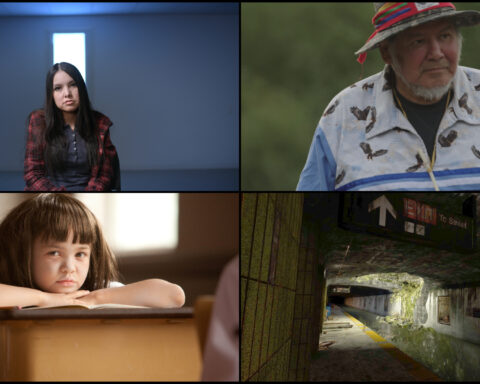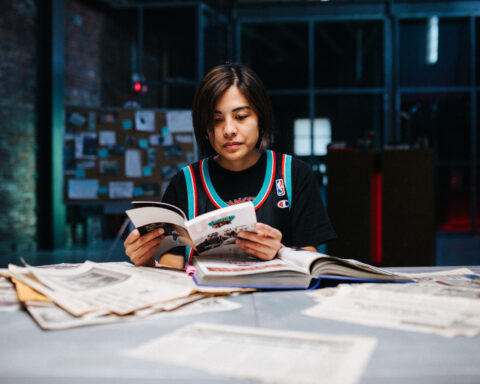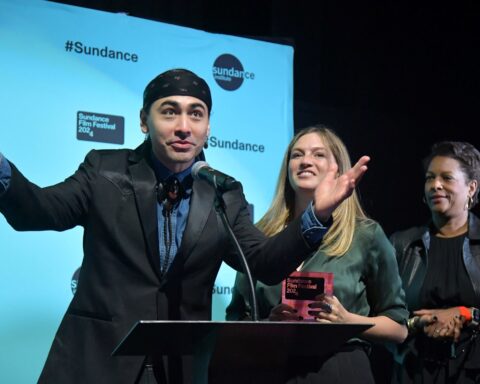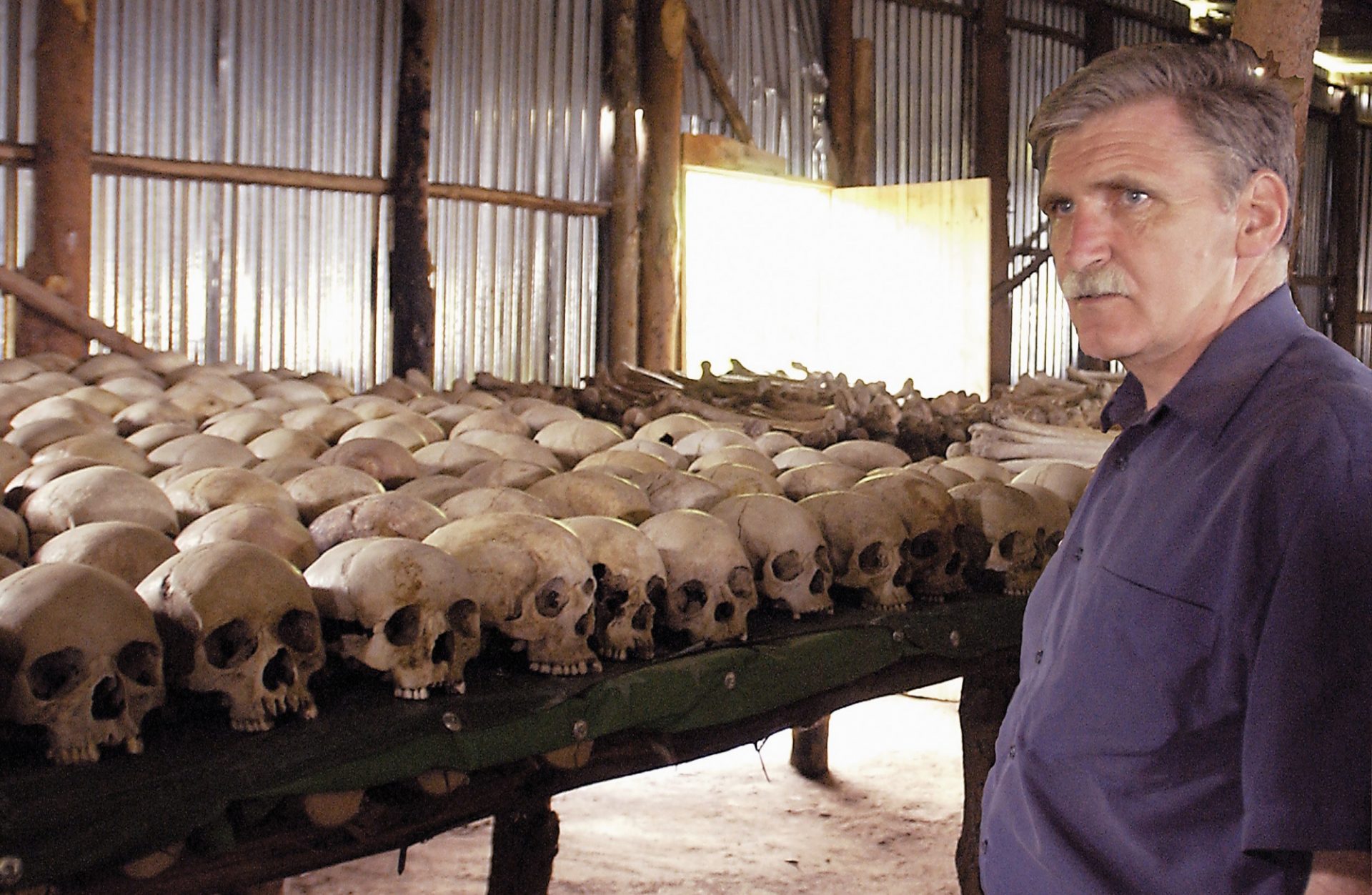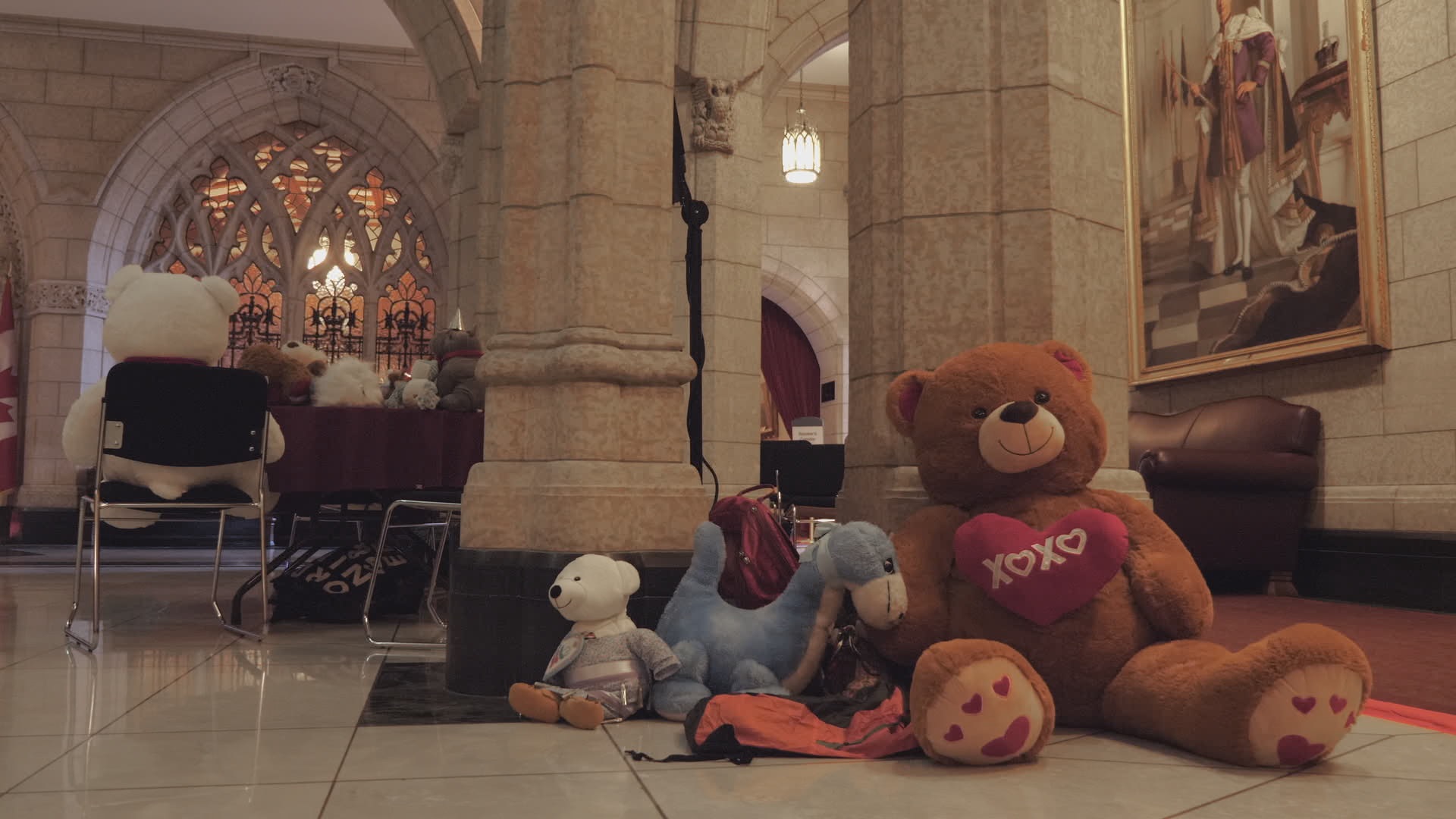The Australian Dream
(Australia, 106 min.)
Dir. Daniel Gordon
Programme: TIFF Docs (International Premiere)
Don’t ever let anyone tell you that one person can’t make a difference. The Australian Dream offers a much-needed portrait of an individual’s ability to inspire change through the story of footballer Adam Goodes. He’s one of the biggest football stars in Australia when the film looks at his career including the high profile 2012-2015 streak with the Sydney Swans. Better than any goal he ever scored on the field was the fight he carried outside the arena as he confronted his nation’s racist colonial past.
Goodes, a two-time winner of the Brownlow Medal as the best in the league, has mad skills and athleticism on display throughout The Australian Dream, but director Daniel Gordon isn’t making just another MVP portrait. The doc shows how Goodes’ celebrity status forced a conversation about deeply-rooted racism that Australia needed to have. Goodes is a hero on the field and off for his activism for Indigenous rights and for pushing his community to hold itself to higher standards.
Goodes drives the film through an intimate interview in which he opens up about his experience growing up as the son of an Indigenous mother and a Scottish-Irish father. He, and many other players interviewed in the film, share with Gordon how they internalized the racism they encountered on a daily basis. Stories of trying to scrub the black off their skin as children mirror the larger systemic racism in Australia as Indigenous kids were taken from their parents and essentially bred with white families to dilute and ultimately erase blackness from the nation. Such systemic racism continues today in Australia, as it does in Canada, as the nation struggles to put reconciliation into practice and show citizens how to enact it in their daily lives.
However, the film suggests that there’s a turning point for representations of Indigenous persons in Australia with Goodes’ rise to fame. His status as the star footballer puts black experiences in the spotlight and he continues in the footsteps of players who went before him by taking pride in his race and culture on the field and in interviews. But he nevertheless endures racist taunts from players and fans, and everyone says to shrug it off. “It’s just part of the game,” is the underlying mantra.
Goodes snaps one day in 2013. He’s at the height of his career and running down the field when a spectator hurls the insult of “ape” from the crowd. He whips around, demanding security remove the offending party, and finds himself in shock when his finger rests on the perpetrator: a 13-year-old girl. The episode becomes a national incident as Goodes shows empathy and compassion for the young girl, noting to the press that her words are something she learned from her elders. He inspires Australians to use the incident to reflect on their words and actions, and to grasp that racism is a social construct and that words like “ape” aren’t for laughs.
But the incident polarized Australia as members of the white settler majority argued that Goodes was blowing the word out of proportion and exploiting a child. The age of the offender becomes key as it shows how easily one spectrum of society dismisses the everyday racism that is so common and deeply entrenched in society that they can no longer see it. On the other hand, the girl’s youth makes Goodes’ point so vital and obvious: racist language is not something kids are born with.
The incident prompts Goodes to do some major soul-searching. He investigates his roots and learns more about his mother, Lisa May, who withheld much of the family history from her children to protect them from the trauma she experienced. Goodes learns how his mother was one of “the Stolen Generation” of Indigenous children who were taken from families like kids were during the Sixties Scoop and Residential School years in Canada. He learns about the legacy of cultural erasure and invests himself in Indigenous studies, and becomes a central figure in the national conversation by sharing the personal impact that reconciliation has upon his transformation.
Gordon doesn’t shy away from depicting Australia’s larger problem with racism and laudably straddles the micro/macro case study of Goodes’ fight. The more Goodes becomes an avid spokesperson for reconciliation and for using racism in sport to confront the more deeply rooted problem, the more pushback he received from the white majority. Commentators, pundits, bloggers, and everyday fans decry him for speaking up and put him in his place. The fans boo him and he argues that the booing has an inherently racist undertone, which only inspires more fans to join the chorus. The louder the boos become, the more they amplify the gravity of the situation. At the same time, Goodes’ outspokenness and activism inspires a level of awakening as settler Australians recognize their complacency. They join him in calling out racism when they see it, and showing that they stand with him and not with the nation’s colonial past to which his aggressors desperately cling.
This energetic and emotional portrait of footballer Adam Goodes is an essential snapshot of the road to reconciliation. The film shows how change is possible only when a culture collectively asks itself the hard questions and encourages the conversations it’s been long avoiding. It’s difficult and it’s painful, but it’s absolutely necessary. Canada has a lot to learn from films like this one.




